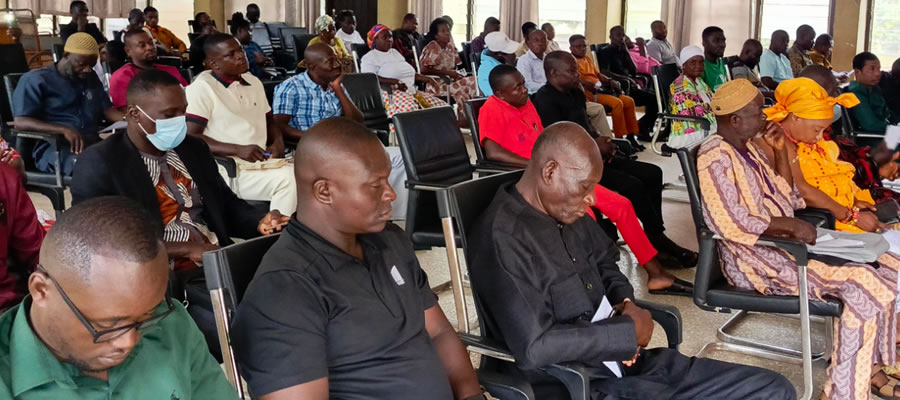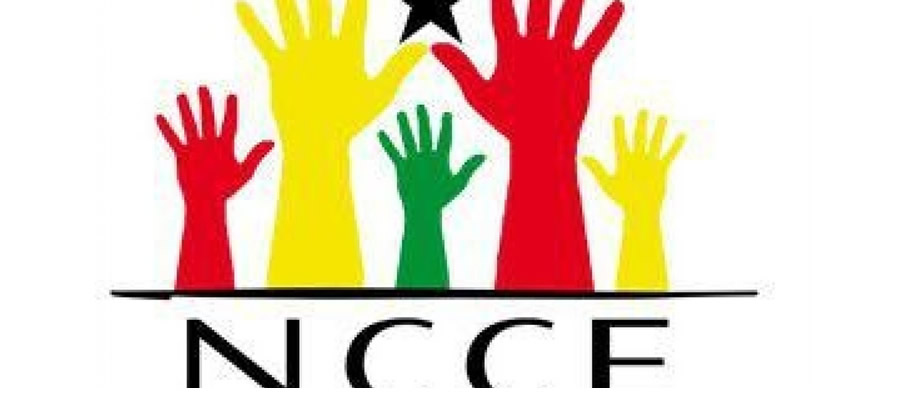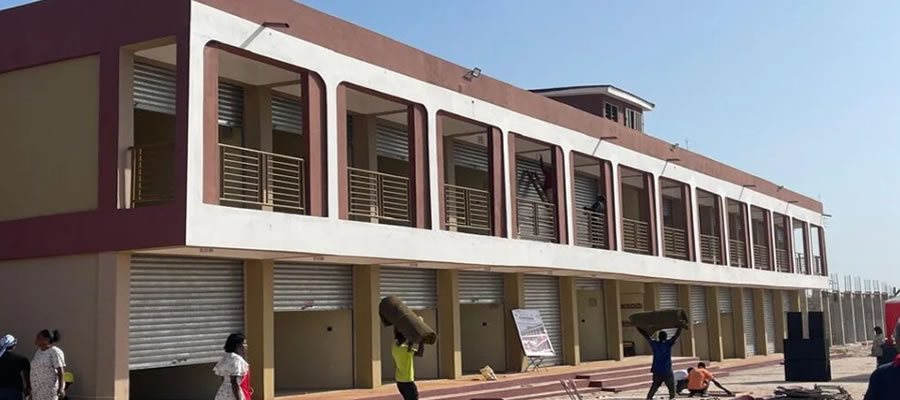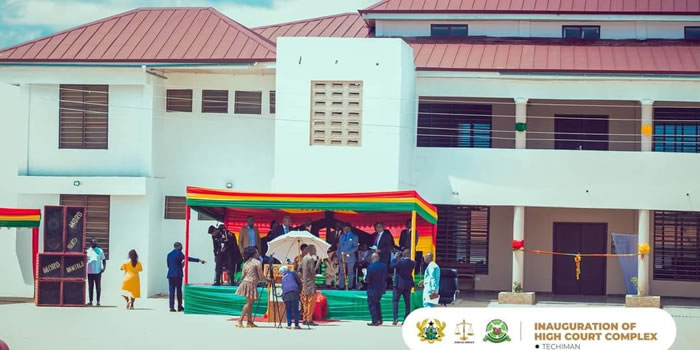

Main source of water for drinking and for other domestic use
Water like the saying goes is live, meaning living organism cannot survive without it. There are so many uses of water but for purpose of this chapter, the concentration is on water for drinking which most paramount and for domestic purpose. As a result, information was collected on main source of drinking water for household members. The various water sources are classified in this section by their quality level in relation to their health effects on the consumer. According to the Ghana Medium Development Goal Report (2012) an indicator referred to as ‘improved water sources’ measures the proportion of the population who use any of the following types of water supply for drinking: piped water public tap, 73
borehole or pump, protected well, protected spring or rain water. Improved water sources do not include vendor-provided water, bottled water, tanker trucks or unprotected wells or springs.
Main source of water for drinking
On the basis of this classification, at the district level, it can be observed from Table 8.10 that a greater (41.9%) proportion of households use pipe-borne outside dwelling as their main source of water for drinking. This is followed by public tap/standpipe which represents 23.5 percent. There are 17.7 percent of households which use bore-hole/pump/tube well as the main source of water for drinking. Also, 5.6 percent of the households use protected well with less than five percent (4.9%) relying on rivers and streams as their main source of drinking water. The least source of water for drinking among households include pipe-borne inside dwelling (2.5%), sachet water (2.4%), protected spring (0.4%), unprotected well (0.4%) and rain water (0.1%) as well as other (0.1%).
In terms of locality, pipe-borne outside dwelling is the major source of drinking water for both urban and rural centres accounting for 51.4 percent and 32.8 percent respectively. Public tap/standpipe is the second most used source of drinking water for urban and rural households representing 19.6 percent and 27.2 percent respectively. Borehole/pump/tube well and protected well is the next major source of drinking water in the urban areas accounting for 14.7 percent. Also households in rural areas which use bore-hole/pump/tube well constitute 20.6 percent. The least source of water for drinking among urban and rural households is unprotected well which make up 0.1 percent apiece.
Main Source of water for domestic purposes
Regarding the sources of water for domestic use, the pattern is similar to the one described earlier. Table 8.10 shows that 41.5 percent of households use pipe-borne outside dwelling, public tap/standpipe (22.1%) and bore-hole/pump/tube well (18.5%) as well as protected well (7.7%), river/stream (6.0%). With respect to urban and rural localities, 51.1 and 32.2 percent respectively of households in the Techiman North District use pipe-borne outside dwelling as their main source of water for domestic purpose. In addition, 19.0 and 25.1 percent of urban and rural households respectively use public tap/standpipe. The data also shows a similar pattern of source of water for domestic purposes as in the earlier discussion.
Bathing and toilet facilities
Bathing facilities used by households
Table 8.11 provides information on bathroom facilities used by households in the district. Bathroom facility is one of the major needs in every home. Ideally each household must have a bathing facility exclusive for its own use. However, in the district most households live in compound houses (rooms) or rented accommodation especially in the urban areas. Exclusive bathroom is therefore not often possible. In the district, bathing facilities are shared by about fifty percent of households (shared bathroom in the same house (35.0%) and shared open cubicle (17.1%). About one in five of the 10,327 (21.0%) have own bathroom for exclusive use and 6.6 percent of households use private open cubicles. Thirteen percent use the open space around the house for bathing while another 5.3percent avail themselves of the bathroom facility in another house. All the other bathing facilities such as public bathhouse, river/pond/lake/dam and “other” are used by only 2.0 percent of households.
In terms of locality, about the same proportion of households share bathing facilities in urban and rural areas. About fifty-two percent of households in urban areas share bathing facilities (33.0 percent for shared separate bathhouse in the same house and 19.5 percent for shared open cubicle) compared with 51.7 percent of households in rural areas of which 36.9 percent use shared separate bathhouse in the same house and 14.8 percent use shared open cubicle. Again about the same proportion of rural households (20.8%) have own bathroom for exclusive use compared with 21.1 percent of urban households. Despite this, more rural households (14.0%) use the open space around the house for bathing compared with 12.1 percent of urban households. Bathroom in another house is used by more of urban (6.5%) than rural (4.2%) households. Public bathhouse is not much patronized by either urban (1.1%) or rural (1.8%) households.
Out of the total number that use River/Pond/Lake/Dam for bathing, 0.1 percent are found in the rural areas whiles 0.2 percent are found in urban areas.
Toilet facility used by household
Table 8.11 presents data on type of toilet facility used by household by type of locality. Information on toilet facilities is considered important for housing as well as public health policy. Toilet facilities reported in the 2010 PHC can be classified into two categories in relation to their location, accessibility and human contact with the waste. These are: Built or constructed facilities in or around the house, which can be public or private. Both can be flush toilets (W.C), pit latrine, KVIP or bucket/pan latrines. Public toilets are for communal or public use (paid or free use). No facility means that there is no facility of any kind available for the use of the household and members use places other than built or constructed privately or publicly owned facilities which include the bush, field, rivers or streams. Some people even use “chamber pot” or other small receptacles such as plastic bags and disposed of these in all sorts of places including uncompleted building, gutters and open fields.
Whereas in 2000 country wide, 20.2 percent had no access to any specific facility, the proportion in 2010 is 19.3 percent thus recording a slight improvement. In the Brong Ahafo region for 2010, the proportion with no facility is 17.8 percent, an increase over the 2000 proportion of 14.5 percent. Although the statistics for the region is not disaggregated by district it reveals a deteriorating situation in access to toilet facilities.
Out of the total of 13,490 households in the district, 1,679 or 12.4 percent have no access to any specific facility and use the bush, fields or river banks. Public toilets which could be W.C, KVIP, pit or bucket (47.1%), pit latrine inside the dwelling unit (17.6%) and KVIP inside the dwelling unit (18.0%) are the three frequently used toilet facilities in the district accounting for 82.7 percent of all households’ access to human waste disposal facilities. The use of water closet (W.C) is not common with households (4.3%) possibly because of the need for pipe water inside the house to facilitate its use.
In terms of locality of residence, there are variations in the proportions of households who use the various types of toilet facilities. More urban households have no access to any kind of facility (14.7%) compared with their rural counterparts (10.3%). The proportions of households using W.C inside the dwelling is slightly lower in urban (3.1%) than rural (5.5%) communities. The proportion of households using Public toilets (KVIP, latrine, etc.) is about the same in urban as in rural areas.
Method of waste disposal
Solid waste disposal
Using of public dumping sites (open space) is the main method of solid waste disposal among households in the district. It is the method used by three-quarters (77.0%) of households in the district. The situation has eventually resulted in the creation of refuse heaps which require huge sums of money to evacuate. The use of public dump (container) is the second most common (9.1%) method of waste disposal among households. Dumping indiscriminately is also high accounting for 6.2 percent and may serve as breeding grounds for many kinds of ailments and spread of communicable diseases in those areas.
In terms of locality, public dumping (open space) is the most predominant method used by urban and rural households accounting 76.5 percent and 77.6 percent respectively. Close to seven percent (6.5%) of the households in the urban areas dump indiscriminately while there are 5.9 percent in the rural localities.
Liquid waste disposal
According to Table 8.15, liquid waste is mostly thrown onto the street or outside by most (48.7%) of the households. An equally high percentage of households (42.5%) also dispose of their liquid waste by throwing it onto the compound. Both methods of liquid waste disposal are not hygienic enough. Again 5.2 percent dispose of their liquid waste by throwing it in gutters. Less than two percent (1.7%) of the households in the district dispose of their liquid waste through a sewerage system.
In terms of locality of residence, the figure shows that, a high (48.8%) percentage of households in the rural areas dispose of their liquid waste by throwing onto the street or outside. It is also pronounced in the urban areas (48.5%). A similar pattern is observed for both rural and urban areas for all the other methods of liquid waste disposal.
A critical analysis of the distribution of the services in the Municipality reveals that access is skewed in favour of urban settlements to the detriment of rural areas.
Safe Water
The availability and accessibility to potable water is of great concern to the household members in the Municipality because not only is water a necessity but also a source of many diseases (water borne) especially among children. Accessibility also affects productivity especially among women and children who are the traditional water bearers. The main sources of drinking water in the urban settlements are pipe borne water, boreholes and unprotected wells, where as boreholes, unprotected wells and rivers or streams are dominant source for rural areas.
In 2000, 42% of the people had no access to safe drinking water however, this has improved to 65% having access in 2005. Access to safe drinking water is lower in the rural communities. About a third (33 percent) of households in rural areas do not have access to safe drinking water, where as it is about 20% in the urban communities who do not have access. Areas where streams and rivers are major sources of water have serious, implications on the health of the people. Within the Municipality, buruli ulcer cases are found mainly in communities along the Tano River.
Solid Waste Disposal
In terms of solid waste, open dumping is the main method of refuse disposal (85.2%). There are a few refuse disposal dumps but these are found mainly in the urban settlements. In 2000, less than 1% houses in the Municipality had their solid waste collected. In 2006, it is estimated that the proportion increased of households that use public dump remained constant at 85.2% for 2000 and 2006.
The Municipality has only 12 refuse containers whereas an average of 190 tons of solid waste was generated per day, average collection was about 115 tones/day using container collections with only 12 refuse measures containers. Thus an average of 75 tones/day of soled waste is stock piled everyday. This has led to huge volumes of refuse piled up especially within the urban areas. This has resulted in a high incidence of reaches and diseases diseased and therefore requires urgent evacuation.
Although the Municipal Assembly had a programme to involve the private sector in waste management and payment of fees, the accessory managerial and political will could not be mustered to implement it, since it meant asking the community members to pay for services. The notion that everything, including refuse collection, should be free need to be discouraged if efficient service is to be provided.
Liquid Waste Disposal
In 2000 less than two percent (2.0%) of houses disposed of liquid waste through sewerage system. The rest disposed of liquid waste on the street or outside the house. Many communities in the Municipality have expanded faster than the capacity of the Municipality to provide sewerage systems and in some cases; the sewerage system has broken down leading to dangerously unhealthy conditions.
Open drains and gutters bordening roads in the Municipality, have become dumping place for all types of waste. These serve as breeding grounds for mosquitoes and other household pests. There is the need to draw up plans of building proper sewerage system and connecting all housing units to them, to avoid future environmental disaster.
Toilet Facility
There are thirty-nine (39 No.) public toilet facilities within the Municipality comprising KVIP, pour flush, septic tank and environ-loo systems.
Date Created : 11/21/2017 2:30:11 AM












 facebook
facebook
 twitter
twitter
 Youtube
Youtube
 +233 593 831 280
+233 593 831 280 0800 430 430
0800 430 430 GPS: GE-231-4383
GPS: GE-231-4383 info@ghanadistricts.com
info@ghanadistricts.com Box GP1044, Accra, Ghana
Box GP1044, Accra, Ghana